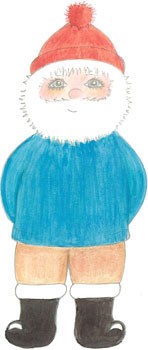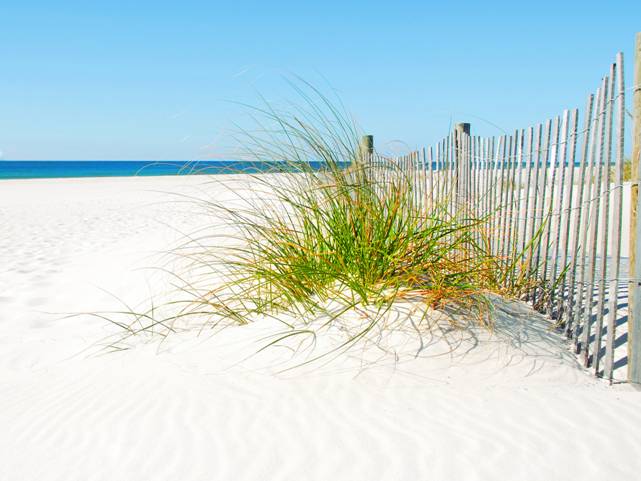
Salty Sam’s Fun Blog for Children
Number 458
Alfred the Great
Hello Everyone

As you know, my lighthouse is situated off the south coast and l very often have to endure Atlantic storms rolling in.
Enduring a really bad storm in a lighthouse can be quite hair-raising!
Rocky Bay on the mainland is a West Country fishing village.
Although the West Country has its own identity, history, scenery and customs, it isn’t really a whole country separate from others, although l think there may be some people who would like it to be so.
Many years ago, far back in history, the British lsles was, however, many countries. This is hard to imagine now because we live on such a relatively small island.
When l told Bill and Bob this, they were very surprised.
ln the past, when travel was much slower than it is today and so was the communication system – that is to say a man on a horse not an e-mail; you can imagine how much bigger the land must have seemed – when you had to travel across it by horse not aeroplane.
By 613, the Anglo-Saxons had driven the Celts out of England and the country was divided into seven kingdoms.
lt was called a Heptarchy.
lt consisted of Wessex, Mercia, Kent, Sussex, Essex, East Anglia and Northumbria. You may recognize that some of these names are now the names of counties or regions.
The man that is thought of as the person that bound these countries together was Alfred the Great.
Bill and Bob were learning about him in school recently.
He was one of only two of our monarchs to be given the name ‘Great’. The other was King Canute.
He was the fourth son of Aethelwulf, the King of Wessex. His mother was Osburga of Hampshire. All four sons would become king in turn after their father died. He died while Alfred was still young.
Alfred took the throne of Wessex when his brother, Aethelred, died in 871.
He spent most of the next few years fighting Vikings who were trying to invade the country.
lt was while he was taking refuge on the lsle of Athelney, on the Somerset Marshes, and preparing his army for war, that the story of how he burnt the cakes took place. He was sheltering in a farmer’s hut. The wife asked Alfred to keep an eye on her baking but he forgot so she told him off.
We can’t really be sure if this story is true but he was probably a better warrior and king than he was a cook anyway which was very lucky for the country.
After defeating the Great Army of the Vikings in 878, he signed a peace treaty.
lt was called the Treaty of Wedmore.
This treaty divided England in half along a line running from London to Chester.
Alfred ruled the land south of the line as a Saxon king, gaining West Mercia and Kent, which were to the east of Wessex, and was recognised as overlord of the land to the north. This area was known as the Danelaw. Our modern bylaws come from Danelaw.
Because of this agreement; all the village settlements in England, whether of the Danes or the Saxons could live under the same ruler and in peace.
ln 886, he captured London, re-built it and was recognised by Saxons and Danes alike as the king of the whole of England.
The coins that depicted his face carried the words ‘King of the English’.
Alfred was a great leader.
He was well-educated, intelligent and self-confident and he was very good at making decisions. But he asked the opinions of those around him too because he cared about what other people thought. These people would have been noble men and church leaders.
As a boy, he was taken to see the Pope in Rome twice, and he learned to read and write when he was a teenager. He was religious without being obsessive about it.
So when it became his task to rebuild the country after wars tore it apart, he had a huge interest in making sure that religion and education would play a major part in doing this.
He invested in schools and monasteries.
He set about reforming the law. He wanted all people, no matter who they were, to be treated fairly under the law.
His aim as king was to promote the well-being of all his people.
ln the 890s, he started the building of a fleet of warships and set up a naval fighting force so that the country would be more prepared to fight off invasion. He reorganized the army. Alfred lived in a time when being clever at warfare was very important to keep a kingdom protected.
He built fortified towns that had walls around them to act as protection against invaders and raiders. These places were called burhs.
Oxford, Bath, Winchester, Hastings, Exeter, Lewes and Southwark which is now part of London, are just a few of the places that were once burhs.
He learned Latin when he was a grown man and personally translated important books from Latin, which was the language of the Church, into the language of the Anglo-Saxons. Although this language is so ancient, if you tried to read it today, you probably wouldn’t be able to understand much of it.
ln 891, he asked monks to write an important new literary work. lt was called Anglo-Saxon Chronicle. This was the history of the people of England. lt began its story over 1,200 years before the Romans came to England in 55BC.
lt was continually updated until the 12th Century.
As king, Alfred also encouraged arts and crafts across the country and many beautiful pieces worked in gold and silver still survive all these years later.
The Saxon Era is one that is quite difficult to explore if you are an archaeologist. Many buildings and household items from the Roman period were made from stone or glass. But Saxon buildings were often made from wood and all traces of most of them have rotted away over the centuries.
They did, however, build some churches from stone as Christianity spread across the country, and some of those still remain.
Alfred had six children with his wife Aethelswitha and died in October of 899 when he was in his early fifties. He was buried in Winchester which was his capital city at the time.
You will notice that the name of ‘Alfred’ seems to be the only name from my story that has been used through to modern times.
A very famous statue of Alfred now stands in his birthplace of Wantage in Oxon.
lf you like my blog, please support it by telling all your friends and followers about it.
Thank you!
And see you again next Fun Friday!
Love and kisses
Salty Sam

www.christina-sinclair.com


Bill and Bob’s Joke of the Week![]()
![]()
Bill: Do you know why we put candles on top of a birthday cake?
Bob: Because it is too hard to put them on the bottom?

Salty Sam © Christina Sinclair 2015
Unauthorized use and/or duplication of material from this blog without express and written permission from this blog’s author and owner is strictly prohibited.
Links may be used to www.christina-sinclair.com

Picture Gallery
 Alfred had a long face with a strong nose and beard
Alfred had a long face with a strong nose and beard
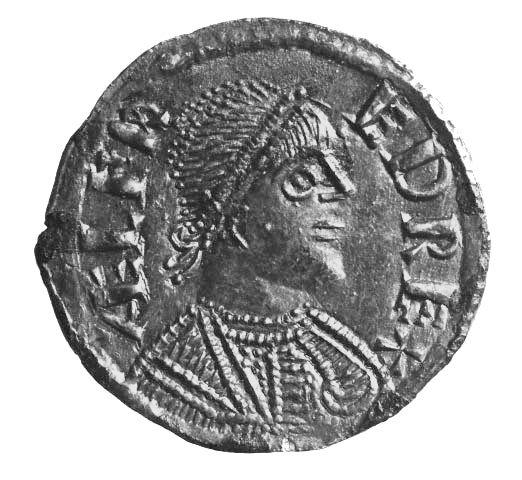 Coin
Coin
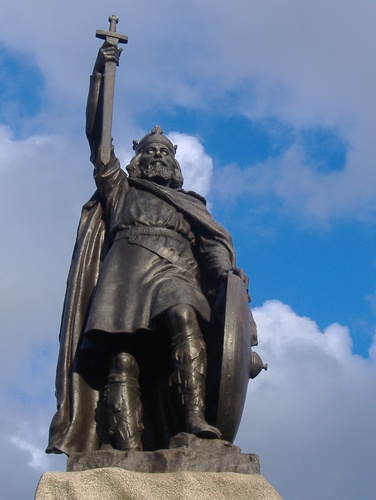 Statue showing the clothes and weaponry of a Saxon king
Statue showing the clothes and weaponry of a Saxon king
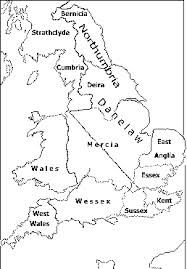 Can you find the seven countries?
Can you find the seven countries?


 THE SALTY SAM NEWS DESK
THE SALTY SAM NEWS DESK

This week I thought I would tell you about the Thames Barrier, because I didn’t have time last week.

Bill and Bob thought it was a spectacular sight spanning the River Thames near Woolwich. It is one of the major flood defences of the world.
There is small visitor centre there with information as well.
The barrier has 10 steel gates that spend most of the time lying on the river bed to allow shipping to pass above them.
The structures between the gates are called piers.
The circular-sided gates can be raised to block tidal surges coming up the river from the North Sea which might otherwise flood a large area in the centre of London – which is in a kind of basin in the landscape.
The gates have been rolled up many times since the barrier became operational in 1982.
The people in charge of the barrier keep a watch on the weather forecasts all the time.
They know when high tides are expected and they watch out for heavy rainfall and high winds too.
If they think that a tidal surge could threaten London, they will close the gates of the barrier and this only takes 30 minutes to complete.
The dam cost a lot of money to build but it protects a lot of valuable property so it was money well-spent.
On the 31st of January 1953, famously a great storm came from the North Sea.
The whole of the east coast of Britain was badly hit. Low-lying Holland was also terribly affected.
In Britain, about 32,000 people had to be evacuated from their homes and 307 people were actually killed by the floods that surged in from the sea.
It was one of the worst peace-time emergencies of the last century.
Central London was flooded too.
The water came over the embankments built by Joseph Bazalgette in the late 1800s to house some of the 1,100 miles of street sewers that ran under London.
(These sewers were built to keep sewage out of the River Thames – and of course have had to be updated since.)
Before the great flood of 1953, London had flooded many times over the centuries.
Once the main port facilities of London had moved down to Tilbury, it was possible to start thinking about building modern flood defences upstream from Tilbury across the part of the river that did not have to accommodate huge container ships anymore.
With sea levels rising, this modern technology is becoming more and more important to Londoners!


*********************
TO ADVERTISE ON THIS BLOG
PLEASE CONTACT:
christina.sinclair.ads@aol.co.uk
*********************

 Recipe Spot
Recipe Spot
Apple Cake
lngredients
180g/6oz self-raising flour
Pinch of salt
90g/3oz butter
90g/3oz sultanas
90g/3oz sugar
2 beaten eggs
1 large cooking apple
1 teaspoon ground cinnamon
1 teaspoon sugar for topping ( white or brown)
Preparation
- Set oven to 200 degrees Celsius/Gas Mark 6
- Grease a 20cm cake tin
- Peel, core and slice the apple
- Sieve the flour and salt into a mixing bowl
- Rub in the butter
- Add the sultanas and sugar
- Mix together with the beaten eggs
- Pour mixture into the cake tin
- Arrange the slices of apple over the top of the cake
- Sprinkle with the cinnamon and teaspoon of sugar
This cake can be served hot or cold
Lovely served with double cream or a scoop of ice cream
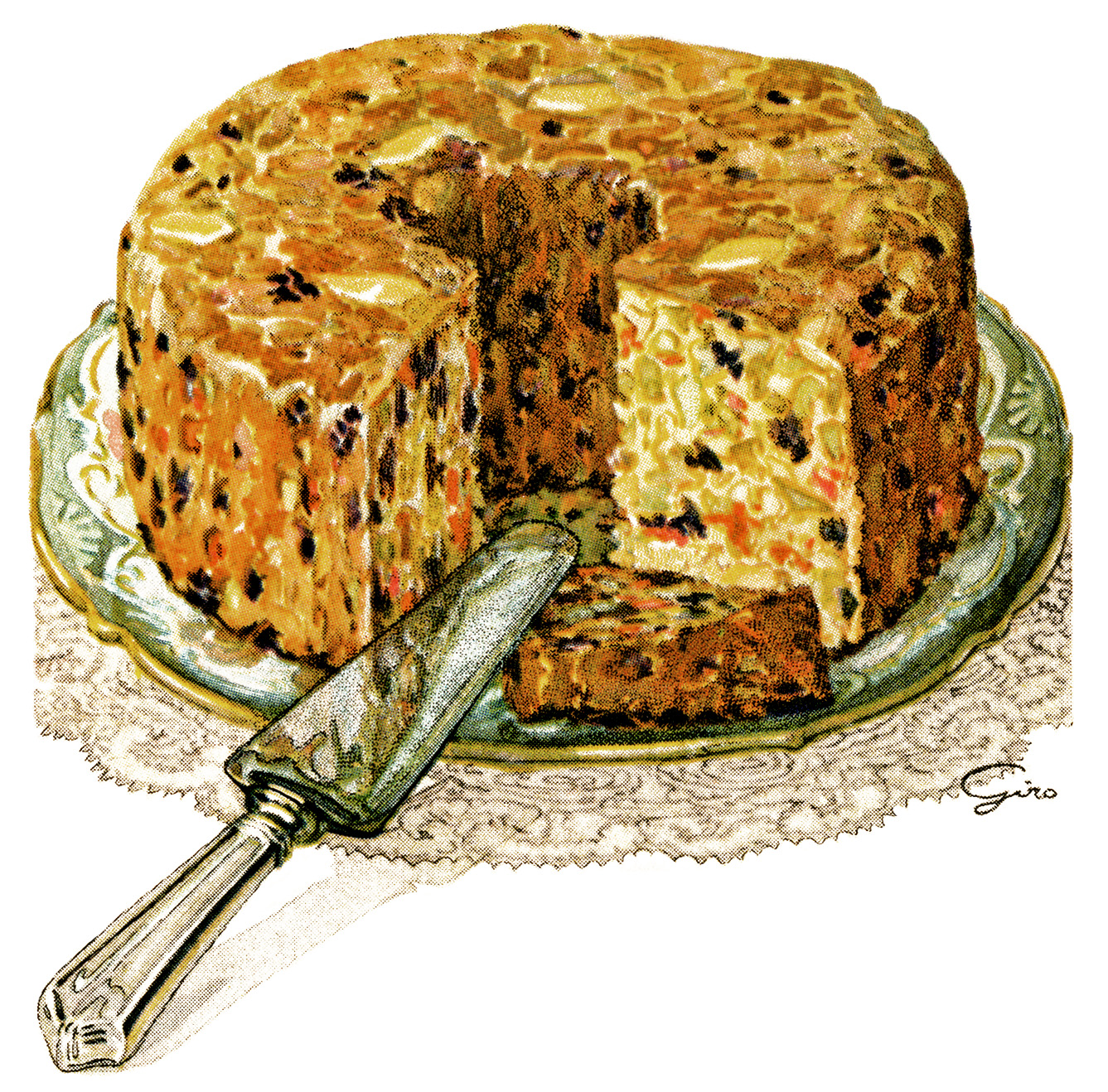



lt’s the Weekend!
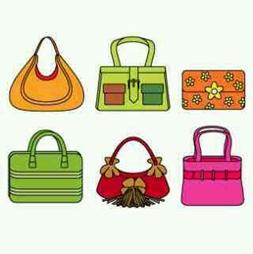
HOW TO MAKE AN EMERGENCY HANDBAG KlT
Do you ever have crackers at Christmas and look at the gift inside and two minutes later it is forgotten about?
Here is a really useful gift to give the people sitting up to the table!
It is a little bag full of things that can be used when there is a little emergency.
You could put some gifts inside like: a couple of sticking plasters that can be put on a small cut or a blister worked up by a shoe, a small pack of emery boards to smooth down a rough fingernail, a couple of small safety pins (threaded onto a length of yarn) that can be used to hold together a seam that has come adrift, a tiny mirror in case someone gets an eyelash in their eye, a needle and thread case and a couple of buttons.
Your guest could add ideas of their own; like a tray of painkillers or throat sweets or a bottle of clear nail polish to stop a hole in a pair of tights running into a ladder.
If you are giving a bag to a child, you could fill it with toys or sweets. Put an initial on the front instead of a cross.
If you are giving one to a man, you could knit it in the colours of his football team and fill it with football shaped chocolates. He could keep the bag in his drawer to keep a spare watch in or a little bit of loose change tucked away safely.
BAG (KNIT TWO)
Using 4mm knitting needles and green dk yarn cast on 21 stitches
Knit 2 rows of garter stitch
Knit 22 rows of stocking stitch
Knit 4 rows of garter stitch
Cast off
TO MAKE UP
- Using Swiss darning embroider a red cross onto one side of the bag
- Each arm of the cross and the centre part is 3 stitches across and 4 stitches high
- Using over-sew stitching and with right sides together sew bottom and side seams
- Crochet 50 chains into a length of green yarn
- Thread this cord along the top of the bag and tie a knot at the end of the chains

Please note that the material on this blog is for personal use and for use in classrooms only.
It is a copyright infringement and, therefore, illegal under international law to sell items made with these patterns.
Use of the toys and projects is at your own risk.
©Christina Sinclair Designs 2015



